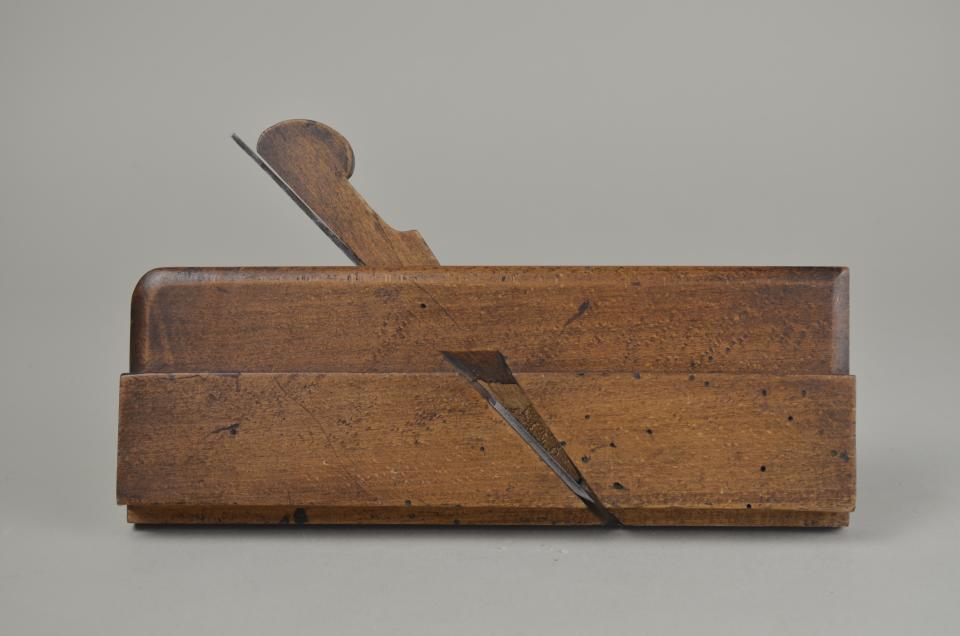
L: 24.0cm W: 2.7cm H: 14.0cm
a- L: 24.0cm W: 2.7cm H: 8.8cm
b- L: 15.9cm W: 2.5cm H: 0.7cm
c- L: 17.7cm W: 2.0cm H: 0.2cm
A wooden match tonguing plane consisting of 3 parts.
a- The body is rectangular and made of a brown hardwood. A cheek protrudes from the bottom half of the front body. The throat cuts diagonally through the middle of the body and is exposed through the cheek. The sole is flat with a straight groove running down the centre. The back edge extends down to create a small fence. Stamps on the toe read: "I BLOWER"; "GABRIEL"; "I DO?W???". Stamps on the heel read: "I BLOWER"; "4". Inscription on the back body in pencil reads "GABRIEL".
b- The wedge is made of a hardwood similar to the body. It tapers to a point on one end and is rounded in an elliptical form on the other. A shallow cut-out below the head allows for easy handling.
c- The iron is a narrow strip of grey metal. It abruptly widens near the cutting edge. The cutting edge consists of two parallel chisel edges with a gap between them. The width of the cuts are (l-r): 5/16"; 1/4"; gap 3/16".
Tonguing planes cut two parallel grooves in a workpiece. They are used in conjunction with a corresponding grooving plane to create tongue-and-groove joins. When used together, they are known as match planes. The iron of a tonguing plane contains two sharp edges and a central notch that leaves a raised ridge.
